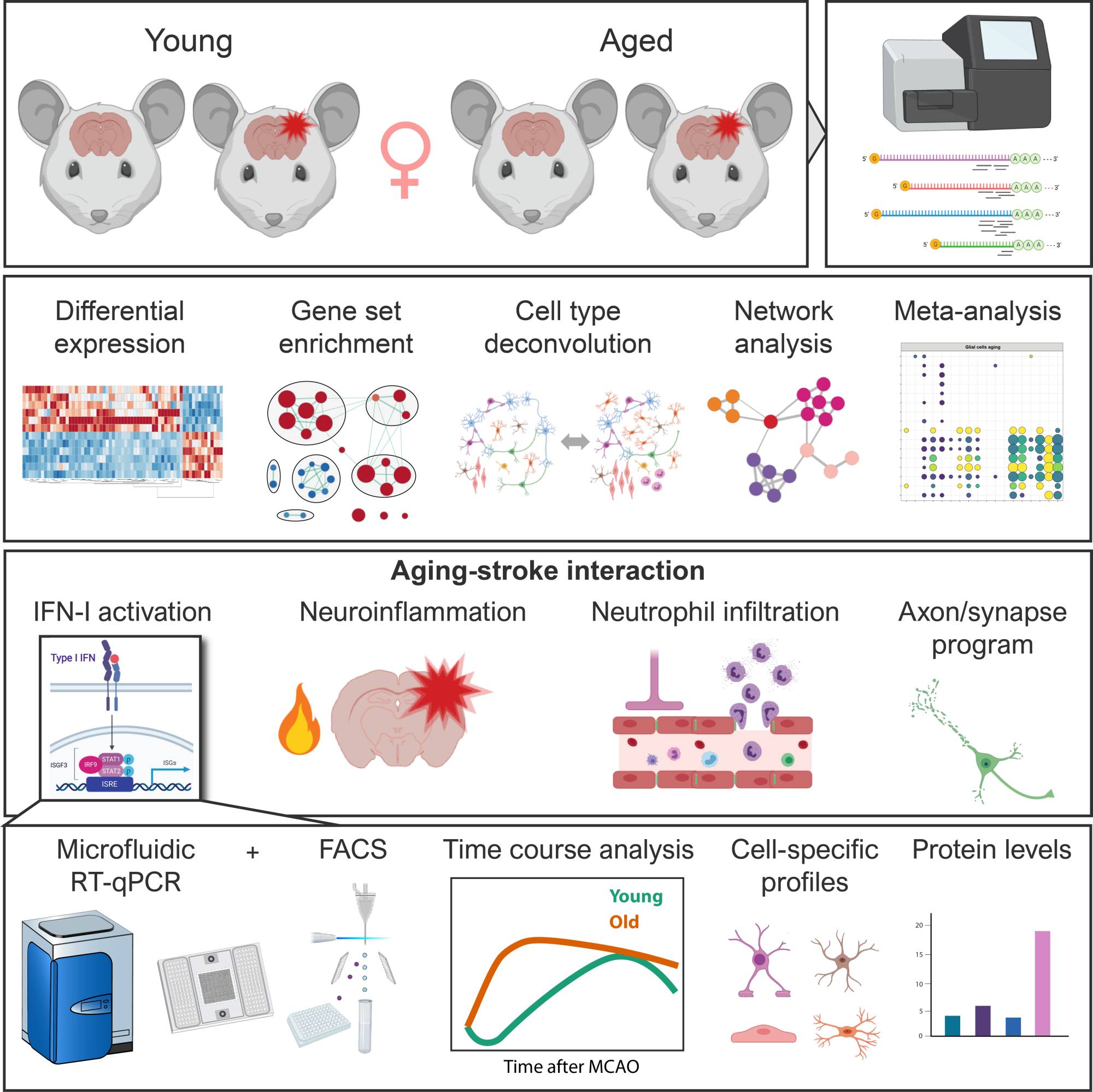Age-dependent response to stroke characterized in mouse model
Wed Jun 17 23:35:00 CEST 2020
Wed Jun 10 15:06:14 CEST 2020 | Wed Jun 10 15:06:14 CEST 2020 - Wed Jun 10 15:06:14 CEST 2020
Cerebral stroke is one of the leading causes of death and long-term disability worldwide. It affects primarily the elderly population and is typically recognized as a disease associated with aging. However, it remains unknown how such an age-dependent vulnerability develops, and what are the underlying mechanisms. To provide insights into these questions, researchers from the Institute of Biotechnology and the Institute of Experimental Medicine, Czech Academy of Sciences used mouse model for ischemic stroke and RNA sequencing to analyze and compare molecular responses to stroke between young and aged brains. The results of this work have been published this week in the scientific journal Cell Reports.
RNA sequencing allows researchers to quantitatively infer how much product is being produced from each gene at any given time, in a process called gene expression. Levels of gene expression reflect the underlying state of the tissue, and by comparing these levels to the healthy brain, researchers can identify cellular pathways that are relevant to the stroke pathology. In this research, they focused on the differences between the young and aged brains.
„We were a bit surprised to see that on a global level, the gene expression after stroke is similar between young and aged brain. However, we identified some genetic components that are quantitatively different “, says Lukas Valihrach, a senior author of the study.
One of the cellular pathways that was over-activated in the aged brain was type-I interferon signaling. Interferons are antiviral cytokines normally produced by immune cells that are crucial for the organism´s antiviral defense. However, they can also promote excessive inflammation and be detrimental to the brain, as was recently demonstrated by other studies. The excessive activity of the interferon pathway within the aged brain therefore caught researchers’ attention.
„All data suggested that the differential activation of IFN-I signaling pathway is likely to contribute to the exacerbated stroke outcome in aged mice and represents a potential target for therapeutic intervention that has been so far overlooked “, says Peter Androvic, first author of the study.
The authors further found that interferon-elicited gene expression is sustained for at least 14 days at higher levels in the aged brain. They then carried out cell-specific analyses, which pointed to the role of non-neuronal cells including microglia and oligodendrocytes. Further experiments are currently underway to elucidate the temporal changes in cell-type specific expression and the role of the cellular heterogeneity in the underlying pathophysiological processes. Researchers hope that the results of the newly published study will be useful to the broader scientific community and will help in the search for new therapeutic approaches to treat ischemic stroke.
Graphical summary of the study

